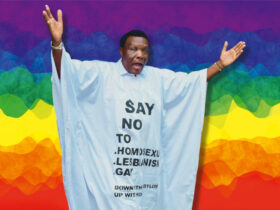
Flexible Mechanisms and Carbon Trading
As a result of the growing scientific consensus that global temperatures are rising, several multilateral treaties have emerged in recent decades to address environmental issues. One example of such an agreement is the Kyoto Protocol, which was adopted under the United Nations Framework Convention on Climate Change (UNFCCC) in 1997. In the current fight against climate change, the Kyoto Protocol’s objective of ensuring its 192 participating countries consistently reduce the emissions of greenhouse gases remains relevant. Although the treaty places responsibility on individual countries to implement domestic efforts that will reduce their emissions levels to meet targets, it also includes flexible mechanisms to help nations meet emissions reductions goals in a less cost-bearing manner.
A particularly notable example of a flexible mechanism is carbon trading, which allows a country to offset its emissions by buying other countries’ reductions in emissions in tons of CO2. In other words, if a country emits less than its emissions target, it is allowed to sell the emissions it did not use to another country that may be struggling to meet the same parameters. According to the World Bank’s State and Trends of Carbon Pricing 2018 review, carbon trading has created a new carbon market that is valued around $82 billion.
REDD
One controversial product of this new global carbon market is the UN-REDD program. REDD, which stands for Reducing Emissions from Deforestation and Degradation, is a flexible mechanism implemented by governments, NGOs, and the private sector that allows developed countries such as the U.S. to pay developing or globally southern countries to reduce their emissions through the prevention of deforestation and the carbon market.
Forests are particularly significant to this program as they are one of the largest carbon sinks, or natural reservoirs that absorb and store carbon, on earth. According to a 40-year study on tropical forests, tropical trees in undisturbed forest are absorbing nearly a fifth of CO2 globally. For this reason, especially under the Kyoto protocol, it is imperative to protect our carbon sinks. Although REDD by definition appears as a successful way to prevent deforestation and reduce emissions, there are potential issues that may arise due to the language and scope of the program.
While REDD allows governments, indigenous peoples, and companies in developing nations to receive payments for reducing deforestation and forest degradation emissions, it does not distinguish between natural forests and man-made forests. The internationally recognized definition of a forest is “land with tree crown cover of more than 10 percent and area of more than .5 hectares…trees should be able to reach a minimum height of 5 meters maturity.” However, nothing in this description mentions the forest ecosystem or whether or not a forest can be natural or man-made.
Consequently, concerns have been raised about REDD fueling corruption. Under REDD, countries or companies can clear out natural forests and plant genetically engineered trees or mono-crops, an unrotated crop, in their place. For instance, in Indonesia, the nation’s natural rainforest is being cleared in order to create palm oil plantations. Indonesian companies such as Sinar Mas, responsible for thousands of acres of natural rainforest being destroyed to make palm oil plantations, can now continue to burn natural rainforest but be compensated for planting palm trees on the remaining land as a carbon sink, even though they are a mono-crop.
In addition, monetary value is being given to trees as a tool to reduce emissions under REDD. However, trees can be diseased or die. This creates the possibility for value to be given to something which does not necessarily have value. In such a case, developing countries could sell the preservation of trees that don’t actually exist. Such a possibility is not unlikely as many developing nations suffer from crippling governmental corruption. Moreover, forestry departments in developing countries, because of their domain revolving around resource management, are some of the most corrupt government institutions in the most corrupt countries.
Because the carbon market and REDD are emerging markets, there is still a lack of regulation in place and great opportunity for corruption to go unpunished or unnoticed. In the words of Interpol manager Peter Younger, “alarm bells are starting to ring, it is simply too big to monitor.” For these reasons, REDD has become a contentious subject among environmentalists and is a pertinent issue to Interpol.
Moving forward, how can the transaction of REDD be safely monitored if forestry departments on the receiving end of the financial incentive to not deforest are cripplingly corrupt? In the current international discord on climate change the “we are running out of time” dialogue that is presented by scientists makes it easy to jump to conclusions and choose the policies that seem to be the least invasive or the easiest way out. Flexible mechanisms like REDD that seem to be easy financial incentives to hit emissions reductions goals may look good on paper, but may present a more complicated reality. It is imperative to carefully look at the details of these quick-fix policies such as REDD in order to establish their long term effectiveness and morality.
The views expressed by the author do not necessarily reflect those of the Glimpse from the Globe staff, editors or governors.







